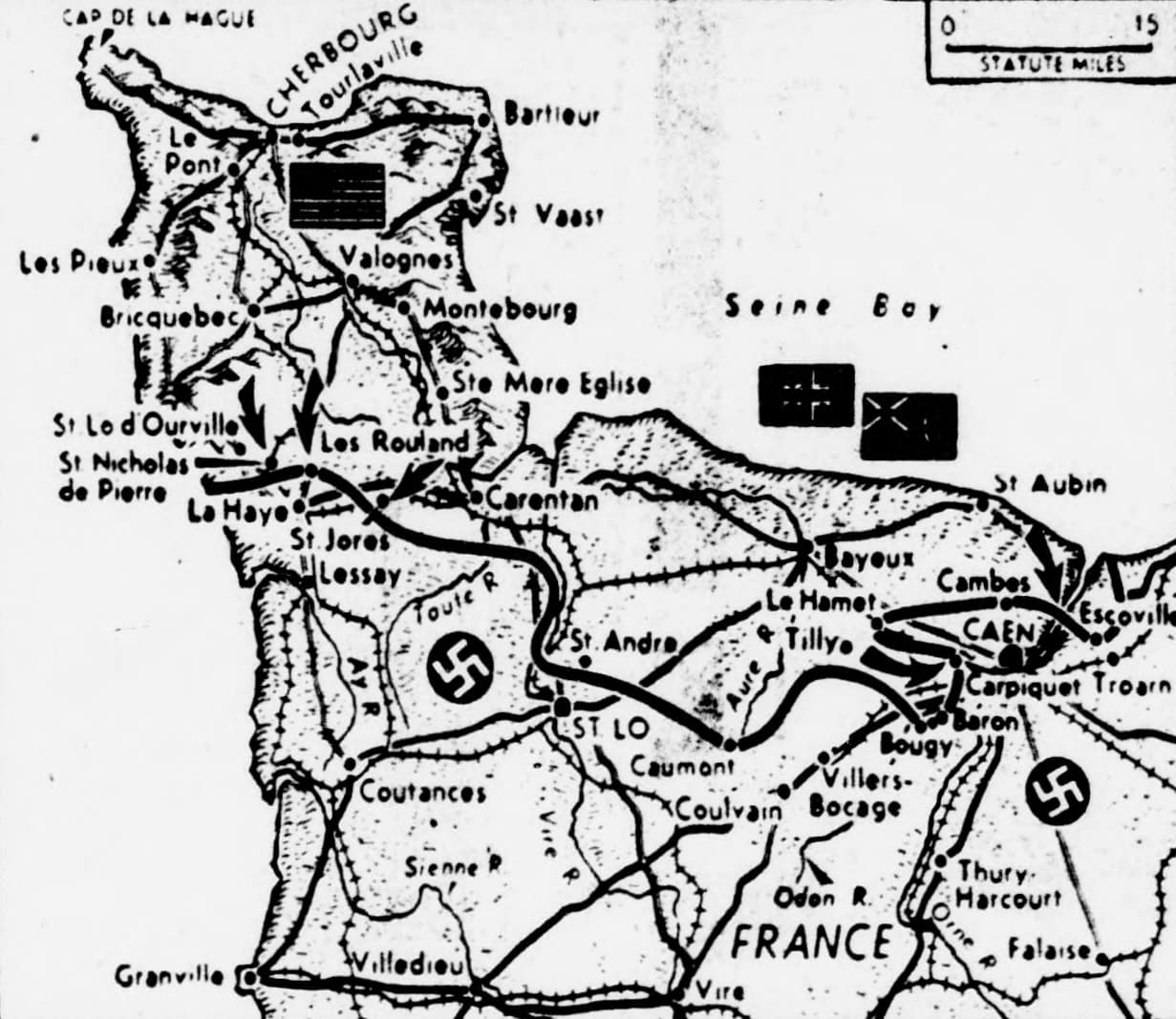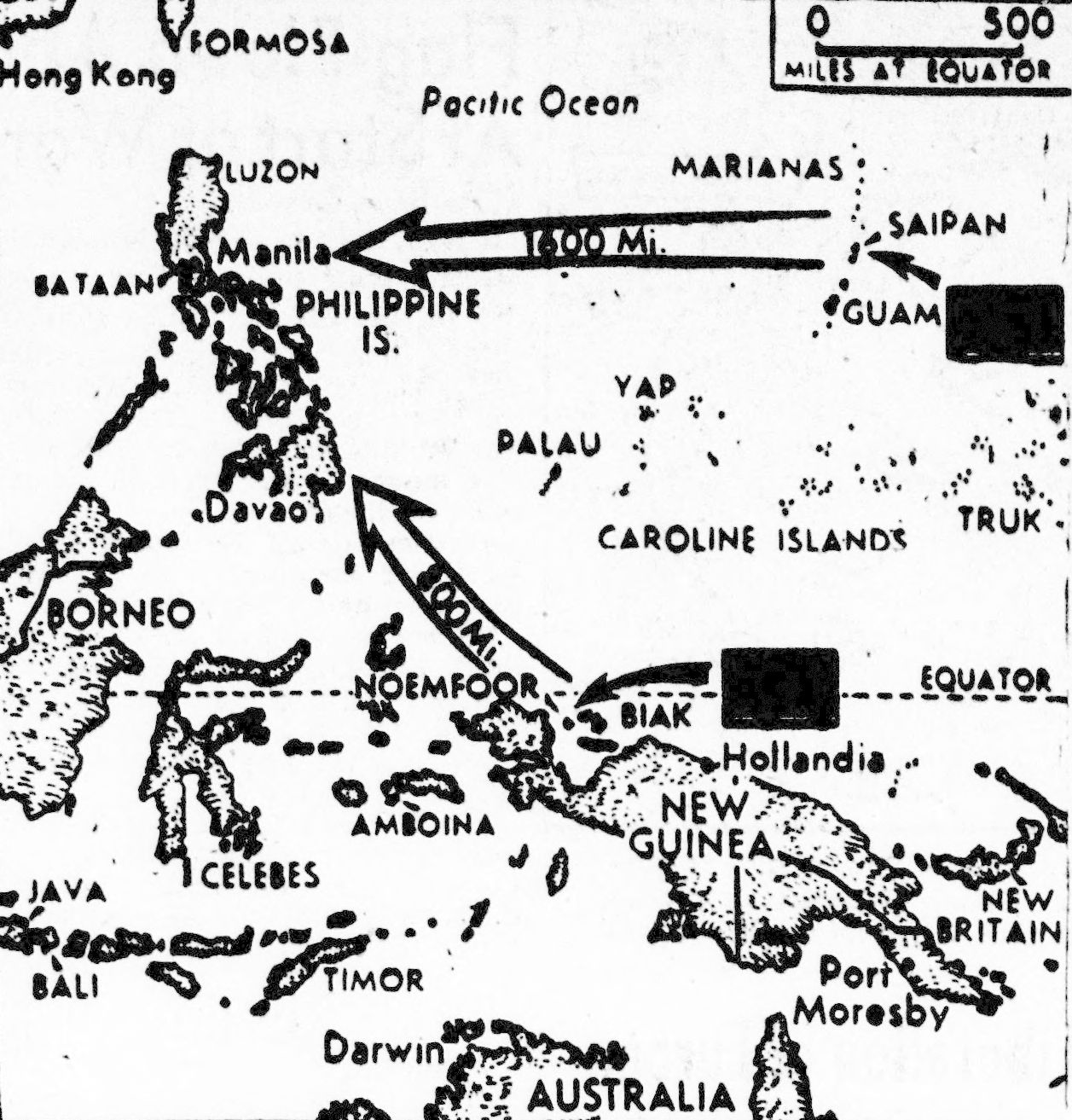Innsbrucker Nachrichten (July 4, 1944)
Zunehmende harte Abwehrkämpfe im Osten
Starke Feindangriffe in der Normandie – In der Bretagne Terroristen und Fallschirmjäger niedergemacht
dnb. Aus dem Führerhauptquartier, 4. Juli –
Das Oberkommando der Wehrmacht gibt bekannt:
In der Normandie griff der Feind gestern, von starker Artillerie und Panzern unterstützt, am Westflügel des Landekopfes an. Er wurde im Wesentlichen abgewiesen und konnte nur an einigen Stellen nach hartem Kampfe in unsere Linien eindringen. An der übrigen Front verlief der Tag ohne besondere Ereignisse.
In der Bretagne wurden 20 Terroristen und 58 in Zivilkleidung abgesprungene feindliche Fallschirmjäger im Kampf bis zum letzten Mann niedergemacht.
Schwere deutsche Kampfflugzeuge griffen in der vergangenen Nacht feindliche Schiffsansammlungen vor der normannischen Küste an. Zwei Landungsspezialschiffe erhielten Volltreffer. Weitere Treffer in Ausladungen wurden beobachtet. Sicherungsfahrzeuge eines deutschen Geleites schossen vor der niederländischen Küste ein britisches Schnellboot in Brand.
Schweres Vergeltungsfeuer liegt auf London.
In Italien ließ die Wucht des feindlichen Großangriffes gestern etwas nach. Nur im westlichen Küstenabschnitt, im Raum von Siena und an der adriatischen Küste wurde heftig gekämpft. An der Westküste konnte der Gegner geringen Geländegewinn erzielen. In allen anderen Abschnitten wurde er blutig abgewiesen.
An der mittleren Ostfront hat die Härte der Kämpfe weiter zugenommen. Westlich Ssluzk wechselten feindliche Angriffe mit unseren Gegenangriffen. Der bis an die Bahnlinie Baranowicze-Minsk vorgedrungene Feind wurde von unseren Panzerdivisionen in schneidigen Gegenangriffen unter hohen blutigen Verlusten zurückgeworfen. Bolschewistische Panzerkräfte drangen in Minsk ein und stießen weiter nach Westen vor. Südöstlich der Stadt leisten unsere Verbände den von allen Seiten anstürmenden Sowjets erbitterten Widerstand und kämpfen sich nach Westen zurück. Bei Molodeczno wurden feindliche Angriffsspitzen im Gegenstoß geworfen. Im Raum westlich Polozk schlugen unsere Truppen an der Düna wiederholte Angriffe der Bolschewisten ab. Die Stadt wurde nach wechselvollen Kämpfen aufgegeben.
In den Kämpfen der letzten Tage hat sich der Kommandeur eines Grenadierregiments, Oberst Reimann, durch beispielhafte Tapferkeit ausgezeichnet. Er fand im Nahkampf inmitten seiner Grenadiere den Heldentod.
Die Luftwaffe griff mit Schlachtfliegerverbänden wirksam in die Erdkämpfe ein, zersprengte zahlreiche feindliche Kolonnen und vernichtete mehrere Panzer, Geschütze und einige hundert Fahrzeuge.
In der Nacht führten Kampfflugzeuge Angriffe gegen mehrere sowjetische Bahnhöfe und zerstörten umfangreiches Nachschubmaterial. Besonders im Bahnhof Borissow entstanden ausgedehnte Brände und starke Explosionen.
Nordamerikanische Bomber warfen verstreut Bomben im Raum von Belgrad und auf mehrere Orte in Rumänien. Deutsche und rumänische Luftverteidigungskräfte brachten hierbei 19 feindliche Flugzeuge zum Absturz. Einzelne britische Flugzeuge griffen in der vergangenen Nacht Orte im rheinisch-westfälischen Gebiet mit Bomben an.



